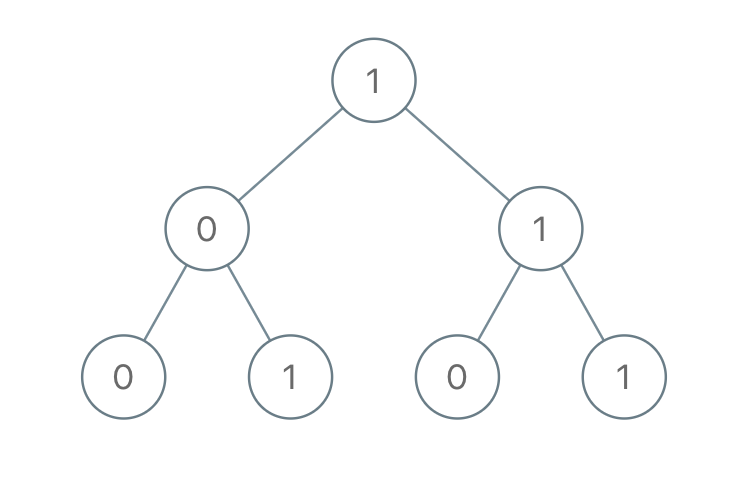題目:
Given a binary tree, each node has value 0 or 1. Each root-to-leaf path represents a binary number starting with the most significant bit. For example, if the path is 0 -> 1 -> 1 -> 0 -> 1, then this could represent 01101 in binary, which is 13.
For all leaves in the tree, consider the numbers represented by the path from the root to that leaf.
Return the sum of these numbers.
範例:
Example 1:

Input: [1,0,1,0,1,0,1]Output: 22Explanation: (100) + (101) + (110) + (111) = 4 + 5 + 6 + 7 = 22
解法:
這題一開始知道要用遞迴寫
因為要有辦法計算父節點的值
但題目給的func不能符合需要
所以要再自己寫一個func
直到最後一個節點才需要計算值
所以func的計算會有3種
1. 當前節點等於null
2. 當前節點是終端節點
3. 要遞迴子節點計算
程式碼:
/**
* Definition for a binary tree node.
* type TreeNode struct {
* Val int
* Left *TreeNode
* Right *TreeNode
* }
*/
func sumRootToLeaf(root *TreeNode) int {
if root == nil {
return 0
}
sum := iter(root, 0)
return sum
}
func iter(root *TreeNode, val int) int {
if root == nil {
return 0
}
val = val << 1 + root.Val
if root.Left == nil && root.Right == nil{
return val
}
return iter(root.Left, val) + iter(root.Right, val)
}
沒有留言:
張貼留言